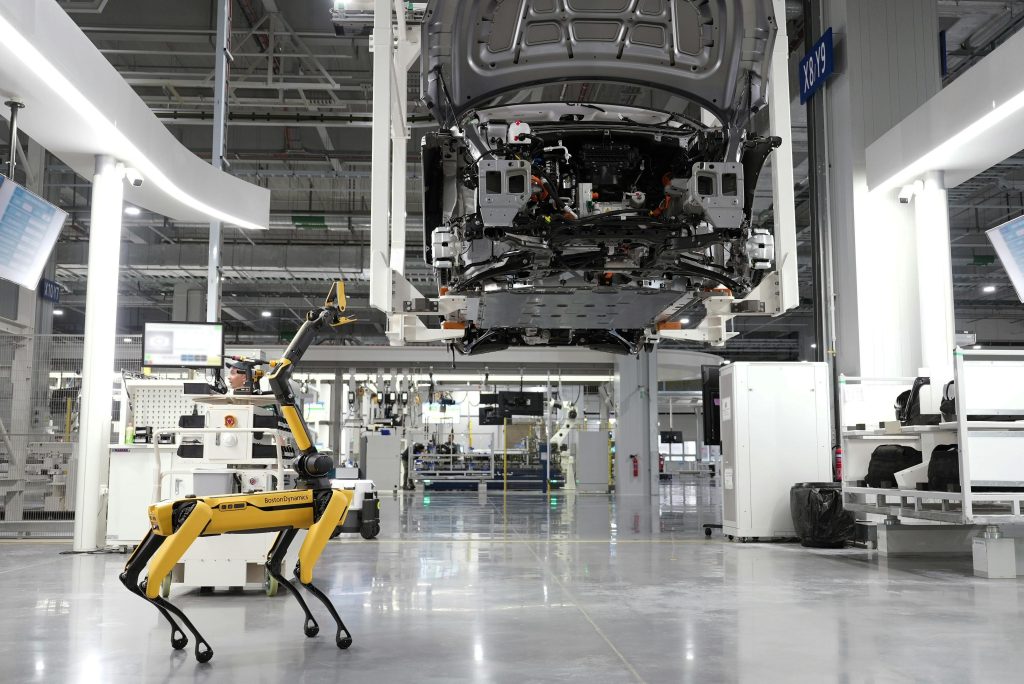In today’s fast-paced and interconnected world, supply chains are the backbone of global commerce. However, traditional supply chain models are often plagued by inefficiencies, delays, and a lack of visibility. Enter digital transformation—a game-changer that is revolutionizing how supply chains operate. By leveraging technologies like artificial intelligence (AI), the Internet of Things (IoT), blockchain, and data analytics, businesses are enhancing supply chain efficiency, reducing costs, and improving customer satisfaction. This article explores the impact of digital transformation on supply chain efficiency and how it is reshaping the future of logistics.
The Need for Digital Transformation in Supply Chains
Supply chains have become increasingly complex due to globalization, rising customer expectations, and the need for faster delivery times. Traditional methods of managing supply chains are no longer sufficient to meet these demands. Challenges such as lack of real-time visibility, manual processes, and fragmented communication have led to inefficiencies and increased operational costs.
Digital transformation addresses these challenges by integrating advanced technologies into supply chain operations. This shift enables businesses to streamline processes, improve decision-making, and respond quickly to market changes.
Key Technologies Driving Digital Transformation in Supply Chains
1. Artificial Intelligence (AI) and Machine Learning
AI and machine learning are transforming supply chains by enabling predictive analytics, demand forecasting, and automated decision-making. These technologies analyze vast amounts of data to identify patterns, optimize routes, and predict potential disruptions. For example, AI-powered tools can forecast demand fluctuations, allowing businesses to adjust inventory levels and avoid stockouts or overstocking.

2. Internet of Things (IoT)
IoT devices, such as sensors and GPS trackers, provide real-time visibility into supply chain operations. These devices monitor the location, condition, and status of goods in transit, enabling businesses to track shipments, prevent theft, and ensure timely delivery. IoT also facilitates predictive maintenance of vehicles and equipment, reducing downtime and repair costs.

3. Blockchain Technology
Blockchain enhances transparency and security in supply chains by creating an immutable record of transactions. This technology ensures traceability, reduces the risk of fraud, and improves trust among stakeholders. For example, blockchain can be used to track the origin of raw materials, ensuring compliance with ethical and environmental standards.

4. Cloud Computing
Cloud-based platforms enable seamless collaboration and data sharing across supply chain partners. These platforms provide real-time access to inventory levels, order status, and shipment tracking, improving coordination and reducing delays. Cloud computing also supports scalability, allowing businesses to adapt to changing demands.

5. Robotics and Automation
Robotics and automation are streamlining warehouse operations and reducing manual labor. Automated guided vehicles (AGVs), robotic arms, and drones are being used for tasks like picking, packing, and inventory management. These technologies improve accuracy, speed, and efficiency in supply chain operations.

Benefits of Digital Transformation in Supply Chains
- Improved Efficiency: Digital technologies streamline processes, reduce manual errors, and optimize resource allocation.
- Enhanced Visibility: Real-time tracking and data analytics provide end-to-end visibility into supply chain operations.
- Cost Savings: Automation and predictive analytics reduce operational costs and minimize waste.
- Faster Decision-Making: AI and data-driven insights enable quicker and more informed decision-making.
- Better Customer Experience: Faster delivery times and accurate order fulfillment improve customer satisfaction.
Applications of Digital Transformation in Supply Chains
1. Inventory Management
Digital tools like AI and IoT enable real-time tracking of inventory levels, reducing the risk of overstocking or stockouts. Automated systems also streamline replenishment processes.
2. Logistics and Transportation
IoT and GPS technologies optimize route planning, reduce fuel consumption, and ensure timely delivery of goods. AI-powered tools predict potential disruptions and suggest alternative routes.
3. Supplier Collaboration
Cloud-based platforms facilitate seamless communication and data sharing with suppliers, improving coordination and reducing delays.
4. Demand Forecasting
AI and machine learning analyze historical data and market trends to predict demand, enabling businesses to align production and inventory with customer needs.
The Future of Digital Supply Chains
The future of supply chains is digital, with several trends shaping the industry:
1. AI-Driven Supply Chain Optimization
AI will continue to play a pivotal role in optimizing supply chain operations, from demand forecasting to route optimization.
2. Sustainable Supply Chains
Digital technologies will support the transition to sustainable supply chains by enabling transparency, reducing waste, and optimizing resource usage.
3. Autonomous Vehicles and Drones
Autonomous vehicles and drones will revolutionize last-mile delivery, reducing costs and improving efficiency.
4. Blockchain for Transparency
Blockchain will become increasingly important for ensuring transparency and traceability in supply chains, particularly in industries like food and pharmaceuticals.
Conclusion
Digital transformation is revolutionizing supply chain management by enhancing efficiency, visibility, and responsiveness. By leveraging technologies like AI, IoT, blockchain, and automation, businesses can overcome traditional challenges and build resilient, future-ready supply chains. As the world becomes more interconnected, embracing digital transformation will be key to staying competitive and meeting the evolving demands of customers.
The future of supply chains is digital, and those who adapt will lead the way in creating efficient, sustainable, and customer-centric logistics networks.
References
- “The Role of AI in Supply Chain Management” – Forbes
- “How IoT is Transforming Supply Chains” – IoT Analytics
- “Blockchain in Supply Chain: Benefits and Use Cases” – Deloitte
- “The Future of Digital Supply Chains” – McKinsey